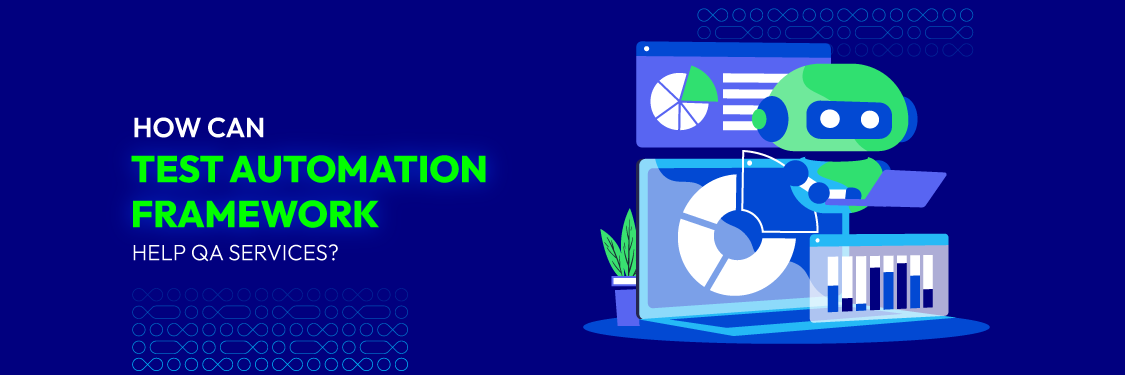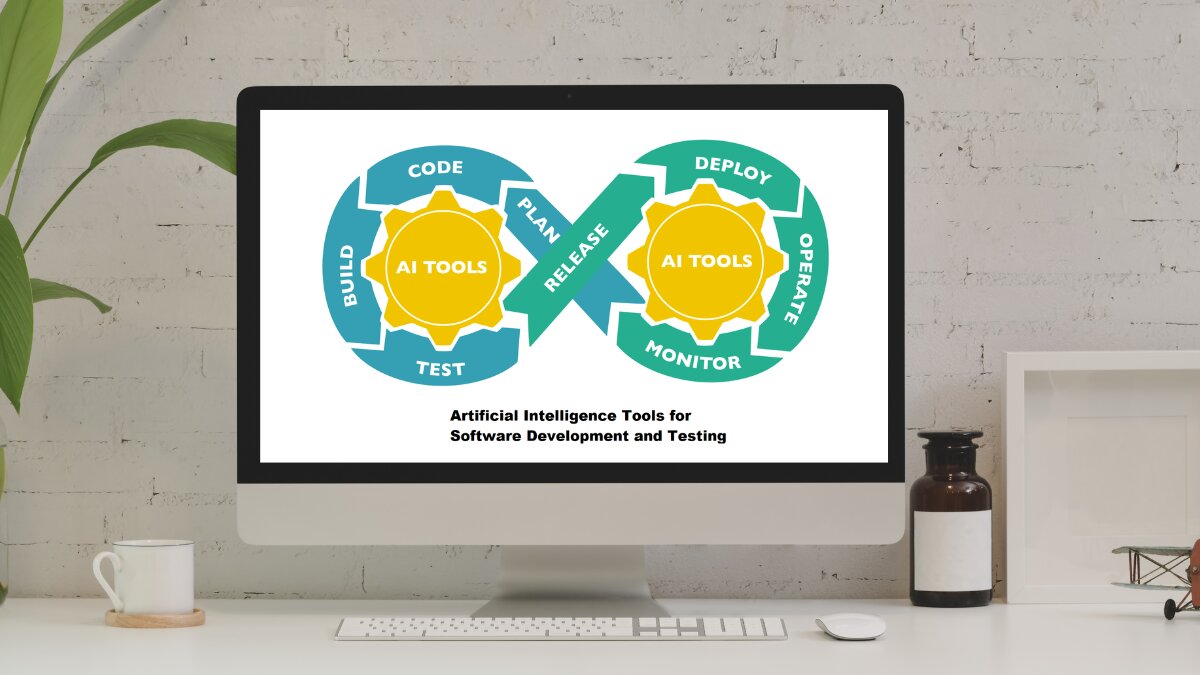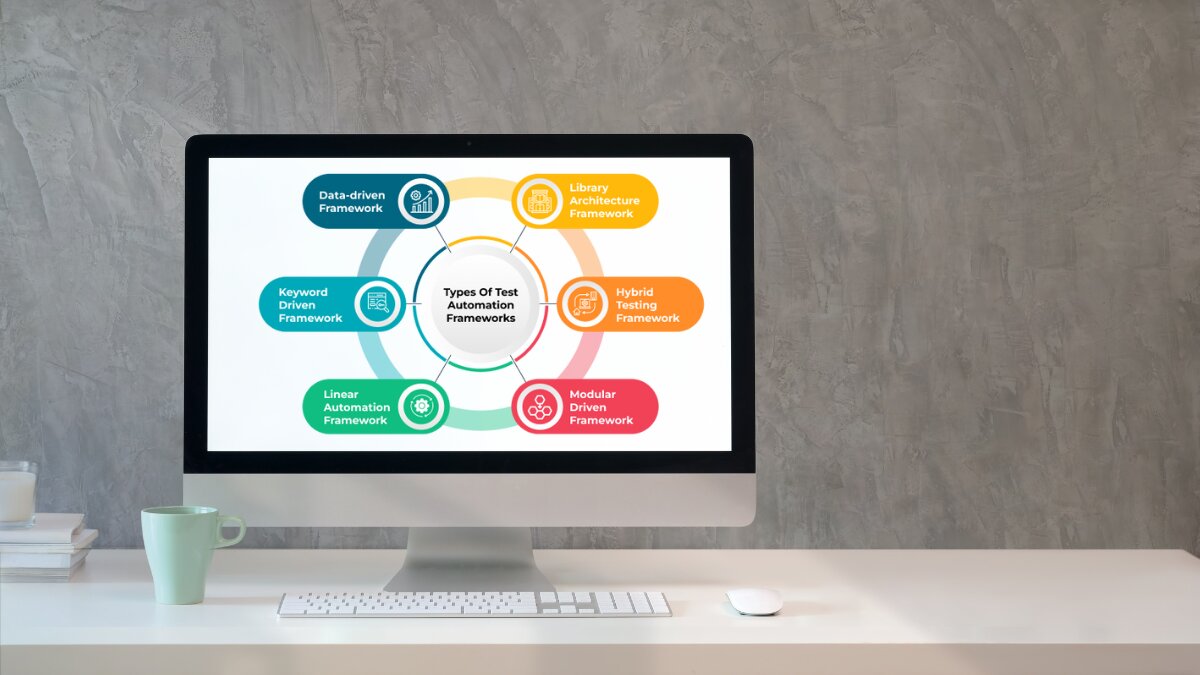How Can Test Automation Frameworks Help QA Services?
Summer Nguyen | 05-08-2024

In software development, Test Automation Framework plays an integral role in enhancing the efficiency of automation testing procedures.
Adopting test automation framework practices within an organization can effectively scale up and streamline the systematic execution of automated testing. This helps deliver greater value to the targeted project. QA teams have utilized and gained advantages from incorporating the test automation framework.
Before exploring different types of automated testing frameworks and their pros and cons. Let’s review some basic concepts of automated testing.
Summary of the Test Automation Framework

The Test Automation Framework is a conceptual component of automated testing. It assists testers in using resources more efficiently.
A Test Automation Framework encompasses a collection of procedures, software tools, and standards. They are collectively employed for conducting user acceptance testing (UAT) of software applications.
Benefits of utilizing Automated Testing

There are some primary benefits of using test automation frameworks. These advantages include:
- Faster development: Frameworks provide a collection of reusable components like functions, libraries, and templates, which testers can utilize to construct test cases, leading to a rapid reduction in development time.
- Easy maintenance: Changes in the application or testing requirements can be quickly managed by updating the core components of the framework. This ensures that all related test cases are automatically updated, thereby reducing the effort required for maintenance.
- Improved test coverage: Frameworks enable the generation of various test scenarios and data combinations, resulting in comprehensive test coverage. This ensures thorough testing of multiple aspects of the application.
- Cost saving: Efficient testing using frameworks helps detect defects earlier in the development process, preventing them from escalating to later production stages and lowering the overall cost of defect resolution.
Category of automated testing framework

1. Linear Scripting Framework
Linear Scripting Framework is built on the idea of “record” and “playback” mode, which is always accomplished in a linear manner. It is frequently referred to as the “record” and “playback” model. This framework is employed for testing applications of small scale.
Typically, with this scripting-driven framework, test scripts are created and executed separately, and this framework is an excellent approach for organizations to get started. Automation scripting is done incrementally, with each new interaction being added to the automation tests.
Pros:
- Test scripts (Record and Playback) can be created without much planning or time-consuming.
- Coding knowledge does not oblige.
- Test scriptings are created quickly.
Cons:
- Lack of reusability due to automatically generated scripts
- Data key encryption prevents us from running with multiple data sets.
- High maintenance – Even minor adjustments take a significant amount of effort.
2. Module-based Testing Framework
Module-based Testing Framework will build independent test scripts, corresponding to each module, component, or function of the application software. Avoiding the use of dependent scripts contributes significantly to the framework’s stability and maintenance.
Testers break the program into modules and write independent test scripts for each. To achieve the desired scenarios, these separate test scripts can be concatenated into bigger test scripts using a master script. This main script is used to call specific modules to execute test scenarios.
The primary rationale is to provide an abstraction layer that protects the main module from any modifications made in individual tests.
Pros:
- Better scalability and easier maintenance due to splitting the complete application into different modules.
- It can write test scripts independently.
- Modifications to one module have minimal or no effect on other modules.
- Maintenance is easy to manage and budget-friendly.
Cons:
- It takes more time to analyze test cases and identify reusable flows.
- The data is hardcoded in the test scripts, so it is impossible to use several data sets.
- Requires coding abilities to set up the framework.
- When test data changes, the scripts must alter in response, or you must create a new separate test script to meet that change.
3. Library-based Architecture Testing Framework
Library Architecture Testing Framework is also known as “Structured Scenario” or “ Functional Decomposition”. It is based on a module framework (Module-based framework) with some additional benefits.
In this framework, this testing framework identifies tasks which are similar within the test script. Then, testers organize these comparable activities according to their functions. Once the functions are organized into groups, these groups will be stored within a library. The test scripts use these libraries to generate new test cases.
Pros:
- Script maintenance is simple and cost-effective.
- Easy to scalable
- The function library can be reused.
Cons:
- Coding skills are mandatory.
- Preparing test scripts requires additional time.
- A set of fixed test data is hard-coded in the scripts.
4. Data-Driven Testing Framework
A data-driven test automation framework focuses on logically separating test scripts and test data from each other. It allows us to create test automation scenarios by passing different sets of test data. The test dataset is saved in external files or resources such as MS Excel Sheets, SQL Databases, XML files,…
Test scripts link to external sources to acquire test data. By using this framework, we can easily create test scripts that work properly for various test datasets. Compared to module-based frameworks, this framework significantly reduces the number of test scripts.
This framework provides more test coverage with reusable tests and flexibility in executing tests only when necessary and by altering the input test data. It is dependable in terms of not affecting tests by changing test data but it has its restrictions, such as testers working on this framework being required to have programming skills. A Practical program for building test scripts.
Pros:
- It supports multi-datasets.
- Modifying the test scripts will not affect the test data.
- Do not need to encrypt test data.
- Save time by executing additional tests.
Cons:
- It requires coding skills.
- Establishing the framework and test data requires additional time.
- It needs experienced automation testers to design the framework.
5. Framework for Testing based on Keyword
Keyword-Driven Testing, also known as table-driven testing, is suitable only for small projects or applications. It involves using a table format to specify keywords or action words for each function or method to be executed. Automation test scripts are then run based on these keywords listed in the Excel sheet of the project.
Pros:
- Do not need to be an expert at writing test scripts.
- The code is reusable because a single keyword can be used across multiple test scripts.
- Tests can be designed before developing an app.
- The test script works.
- The test script operates independently of the app under test with basic modifications.
Cons:
- It is a waste of time and complex to design.
- The initial cost of setting up the framework is not affordable
6. Hybrid Approach to Testing Framework
Hybrid Framework is a combination of the benefits of keyword-driven and Data-Driven frameworks.
Pros: This type takes advantage of a variety of related frameworks.
Cons: The initial work may be more challenging for the framework approaches described above.
Selecting the optimal automated software framework

These test automation frameworks streamline code management for easy third-party review. Choose based on project needs, team skills, timeline, and budget. They enhance productivity through standardized processes and ensure comprehensive test coverage.
When you need to quickly create scripts to execute specific test cases based on predefined requirements or scenarios, you can choose to use both the Data-Driven and Keyword Driven frameworks.
Combining these two frameworks allows you to build a robust testing framework without the need for Gherkin (a natural language programming language used to describe test scenarios). This helps save time and effort in writing test code while keeping your test scripts flexible and easy to maintain.
Closing remarks
In conclusion, quality assurance (QA) services are essential in software development to ensure applications meet user requirements and function effectively. With the limitations of manual testing in scaling alongside the rapid pace of development, automated testing has become a faster and more accurate solution.
However, integrating automated testing into the delivery pipeline presents its challenges. By understanding the fundamental concepts of automated testing and exploring various frameworks, teams can enhance their testing processes and ultimately deliver higher quality software products.






![Top 20+ Must-have Shopify Apps for 2025 [Free & Paid] - Mageplaza](https://cdn2.mageplaza.com/media/blog/must-have-shopify-apps/top-must-have-shopify-apps.png)
![[2025 Updates] Top 10+ Upsell Apps for Shopify - Mageplaza](https://cdn2.mageplaza.com/media/blog/best-upsell-shopify-app/cover.png)